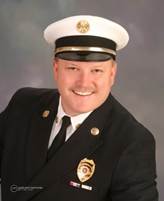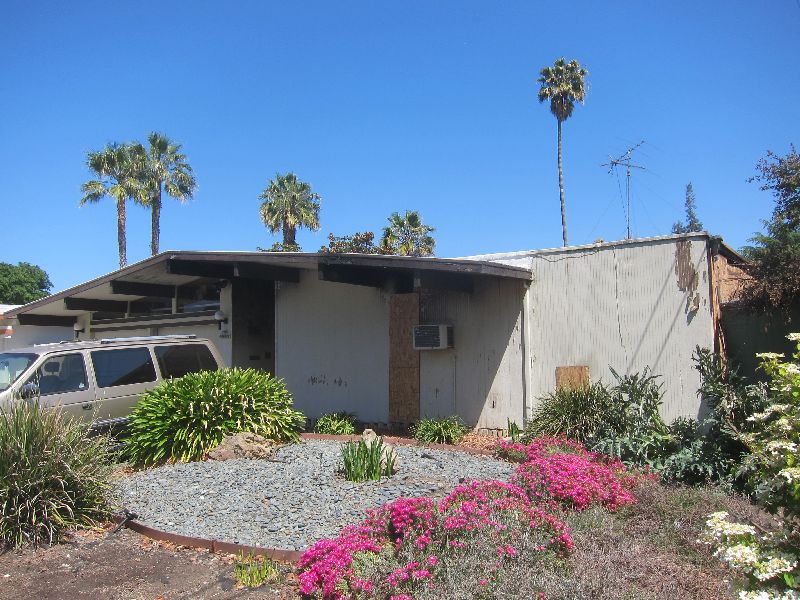
How Good Practices Prevent Eichler Home Fires
 |
|
|
As the owners of two Eichler homes that were destroyed in a San Jose fire prepare to rebuild their homes – as Eichlers – Eichler Network spoke about fire safety to a fire chief whose jurisdiction oversees many Eichler homes, and who lives in one himself.
Carol Heidenreich, whose Eichler home in San Jose’s Fairhaven neighborhood burned to the ground on April 7, said she will “replace the home exactly as it was, with the Philippine mahogany,” the original floor plan and an equal amount of glass.
The home next to hers, which was gutted, will also be replaced with an Eichler reproduction, Heidenreich says.
Although no definitive cause for the fire has been determined, Heidenreich believes it started at an outdated circuit breaker. Throughout the neighborhood, as a result of the fire, neighbors have been replacing these old boxes.
In an interview, Palo Alto fire chief Eric Nickel confirmed what most Eichler owners believe – once a fire starts in an Eichler it can spread more quickly than in more traditional homes both because of the open plans of the homes and the materials used in them.
 |
|
Palo Alto Fire Chief Eric Nickel. |
But Nickel didn’t let that stop him when he was looking for a home for himself and his family. He lives in an Eichler in Marin County. Nickel said basic fire prevention techniques can make living in a modern home safe.
“If homeowners practice these basic fire prevention risk reduction principles,” he said, “they’re very safe, and they can enjoy their lovely mid-century modern homes.”
“I love these homes. I love their look,” he said, adding, “Things that were designed into these homes make them attractive, but if there is a fire it can move more quickly.”
The open plan of Eichler homes can allow fire to spread quickly because, unlike in more traditional homes, interior spaces are not walled off from each other, Nickel said. “Because the homes are so open, there’s not a lot in the design that can compartmentalize the fire, so it gets into the structure very quickly.”
“People who live in Eichlers love the openness. My entire back wall is glass. [But] when that glass fails in the fire, you have a rush of oxygen into the fire from outside.”
The wood paneling that gives Eichlers so much of their character burns much more quickly than the sheetrock used in later homes, and added in some Eichler remodels, often to aesthetically problematic results.
“In Eichlers, there’s not a lot of sheetrock unless it’s been added in a remodeling,” he says. And the paneling can be very flammable depending on what has been put on the surface, varnish or urethane.”
That said, there are aspects of Eichler construction that may slow a fire’s progress. The lack of attics “could help slow a fire,” he said, and so could the thickness of the tongue-and-groove ceiling. Nickel recently did roof work on his own home and noted the thickness of the roof.
“It takes a lot to burn through that wood,” he said. “It would take 20, 30 minutes of direct flame before it would burn through that roof.”
 |
|
|
Nickel recommends the following basic risk reduction practices:
• Have functional smoke detectors and change batteries annually.
• Maintain a home fire extinguisher and replace it as needed.
• Kitchens are where fires often start. Never leave cooking food unattended.
• Another danger spot is your clothes dryer. Clean the lint trap and always be home when the dryer is running.
• Overloaded circuits and older electrical systems often cause fires. If your home has its original electrical system, have a licensed electrician look at it and upgrade if necessary.
Other strategies for prevention include:
• Installing fire sprinklers. Nickel notes that installing sprinklers is expensive, and they can be aesthetically displeasing unless hidden. He does not have sprinklers in his own home.
• Installing drywall to slow fires. “That’s a decision of the homeowner,” Nickel said. “Some things that make Eichlers so attractive are the original wood panels, but you don’t get the advantage of modern fire protection from drywall.” People who wish to retain the original Eichler aesthetic can always install paneling over dry wall.
Although fire can spread quickly in Eichler homes, Nickel doesn’t believe the homes are more prone to catching fire than other homes. And, he noted, “Most Eichler neighborhoods have fast and effective fire departments.”
- ‹ previous
- 322 of 677
- next ›



